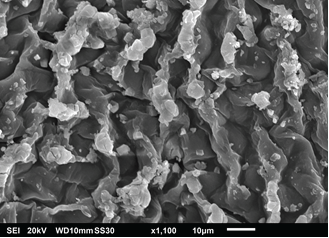 |
|
This work aims to characterize biosorbent materials based on seaweed present on the littoral of Baixada Santista (São Paulo state, Brazil), and test their adsorption properties to remove heavy metal cations (Co+2, Pb+2, and Cd+2) in water, aiming its future application in situ remediations degraded ecosystems. Three types of natural seaweed were studied: Sargassum sp, Ulva lactuca, and Padina sp. These biosorbents were collected, pretreated, and modified by two chemical treatments: 1) Protonation with HCl, and, 2) Oxidation with KMnO4. The preliminary results showed that the Ulva lactuca is promising for the adsorption of heavy metal cations in water, which is also very attractive due to its great availability in the ecosystem, and it is renewable. The biosorbents (natural and modified by chemical treatments) were characterized by Fourier Transform Infrared Spectroscopy (FTIR), and by Scanning Electron Microscopy (SEM). The best heavy metal removal values for the best biosorbent Ulva lactuca (after chemical treatment) were: 65 mg.g-1 for Co (II), 71 mg.g-1 for Cd(II), and 78 mg.g-1 for Pb(II).
Keywords: biosorption, Co (II), Pb(II), Cd (II); Sargassum sp; Ulva lactuca; Padina sp.
|
|
 |

